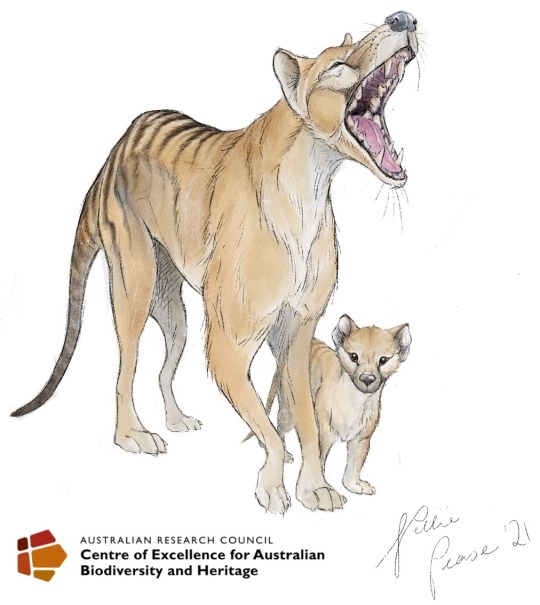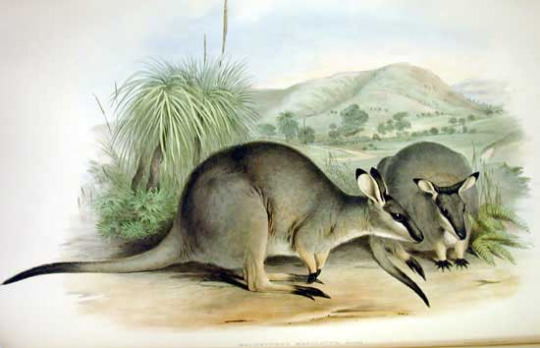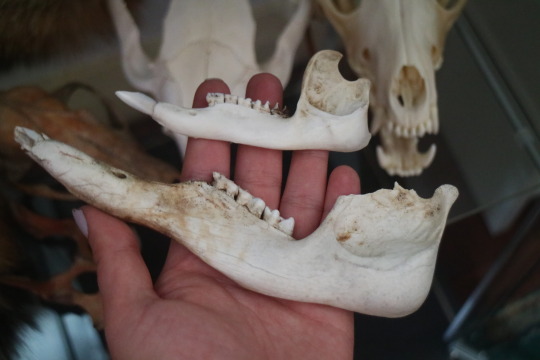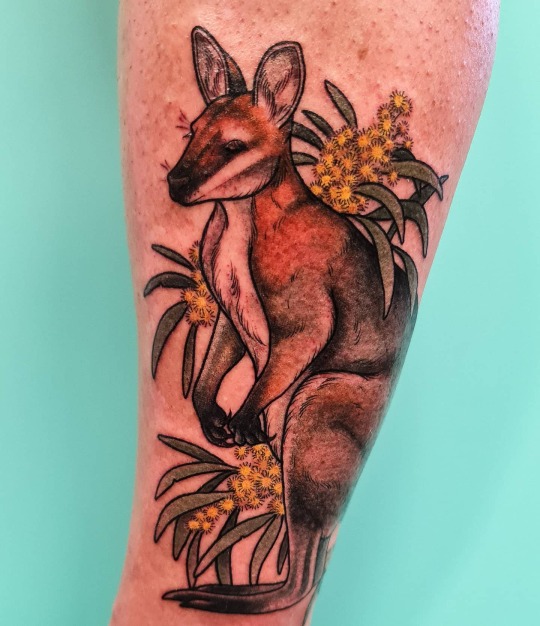#Notamacropus
Text

The wallaby that drinks seawater
A tammar wallaby (Notamacropus eugenii).
Image credit: Colin Beard/Australian Geographic
#colin beard#photographer#australia#australian geographic#tammar wallaby#wallaby#animal#mammal#wildlife#notamacropus eugenii#seawater#nature
17 notes
·
View notes
Text
The biggest and slowest don't always bite it first
The biggest and slowest don’t always bite it first
For many years I’ve been interested in modelling the extinction dynamics of megafauna. Apart from co-authoring a few demographically simplified (or largely demographically free) models about how megafauna species could have gone extinct, I have never really tried to capture the full nuances of long-extinct species within a fully structured demographic framework.
That is, until now.
But how do…

View On WordPress
#Alectura#brush turkey#Dasyurus#demographic model#Diprotodon#Dromaius#echidna#emu#extinction#Genyornis#Kangaroo#megafauna#Megalibgwilia#Metasthenurus#model#Notamacropus#Osphranter#Palorchestes#Phascolonus#Procoptodon#Protemnodon#Sahul#Sarcophilus#short-faced kangaroo#Simosthenurus#Sthenurus#Tachyglossus#Tasmanian devil#Thylacine#Thylacinus
3 notes
·
View notes
Text
#1743 - Notamacropus irma - Western Brush Wallaby
Work sent me out to two country towns yesterday, and following the Google Maps directions between them took me into a complete maze of fire trails in the forests behind the Darling Escarpment. Just as well the van didn’t break down, and that I had enough of a GPS signal that I didn’t get hopelessly lost halfway.
But there was one compensation - coming around a corner and seeing one of these. It seemed utterly horrified to see me.

Illustration by John Gould - “Mammals of Australia”, Vol. II Plate 21, published in 1861. Gould’s works on Australian birds and mammals are justly famous.
Western Brush Wallabies, AKA Black-gloved wallaby or kwoora, kwara, or koora, used to be quite common in the SW corner of the continent especially around what is now Perth, but upon the arrival of Europeans unrestrained hunting, clear-felling, and the introduction of red foxes swiftly reduced their numbers to less than 10 every 100 square kilometers in 1970, and 1 per 100 sq.km. by 1990. And that’s in ideal tall open forest with open, seasonally wet areas. These days you’re only likely to see one as roadkill. Fox baiting has greatly helped their recovery.
Their closet relatives used to be the toolache wallaby Macropus greyi , from SE Australia, but Europeans had driven that species extinct by 1939 - with 10 of the last 14 accidentally killed during an attempt to capture them for captive breeding.
Adult Kwoora are only 80cm tall (the main reason the joeys are so vulnerable to foxes) and unusually diurnal for a kangaroo. Little is known about their behaviour and even their preferred diet and feeding habits is debated, but they don’t appear to need standing water.
3 notes
·
View notes
Photo



The newest skull in my taxidermy collection; an adult wallaby (Notamacropus). Unfortunately I don’t know the exact species. You can really see those amazing lower incisors and the size difference between a wallaby (top jaw) and a grey kangaroo (bottom jaw).
136 notes
·
View notes
Photo

Black-striped wallaby with brigalow wattle. The black-striped wallaby (Notamacropus dorsalis), also known as the scrub wallaby or eastern brush wallaby, is a medium-sized wallaby found in Australia, from Townsville in Queensland to Narrabri in New South Wales. In New South Wales, it is only found west of the Great Dividing Range. @withlovetattoo #tattoos #ink #tattoo #wallaby #wallabytattoo #blackstripedwallaby #australiantattoos #australiantattoo #wattletattoo #brigalowwattle #neotrad #neotraditionalaustralia #botanicaltattoo https://instagr.am/p/CWCXvVUPOd2/
0 notes
Text
Wallabies spotted roaming the UK on nearly 100 occasions
Wallabies spotted roaming the UK on nearly 100 occasions
[ad_1]
By Michael Le Page

The red-necked wallaby (Notamacropus rufogriseus) has been seen across the UK
David Chapman/Alamy
If you go down to the woods today, you might be in for a big surprise. There have been nearly 100 sightings of wallabies across Great Britain in the past decade.
“Everyone was surprised by the number and the spread,” says Holly English at University College…
View On WordPress
0 notes